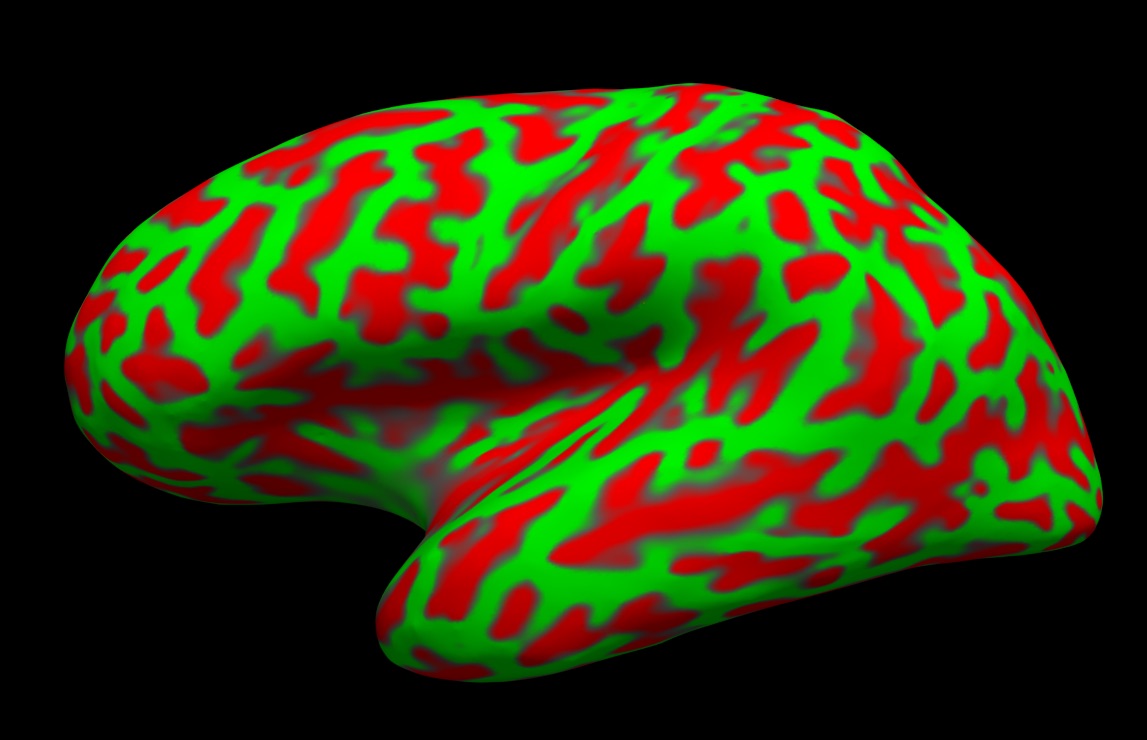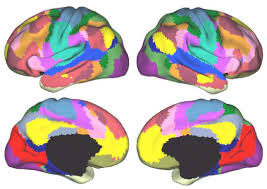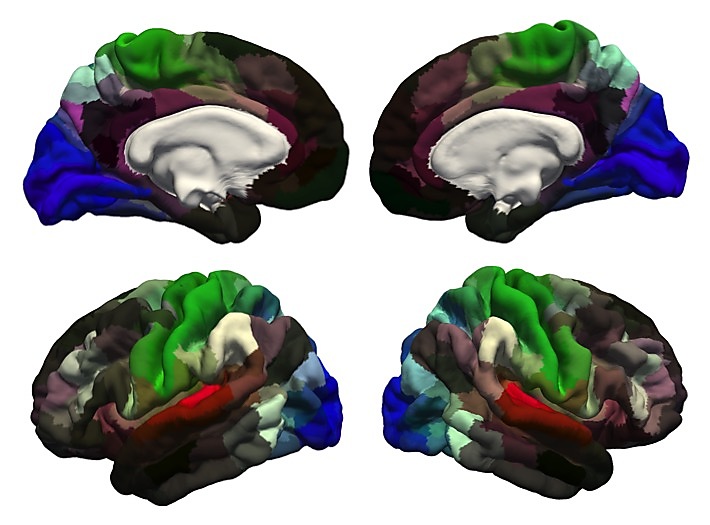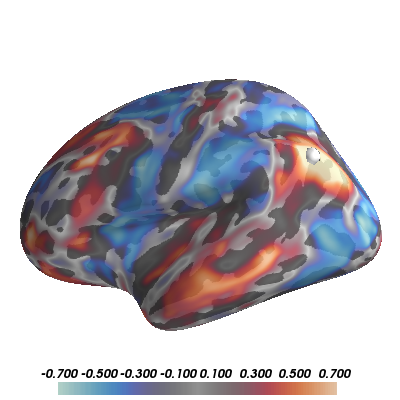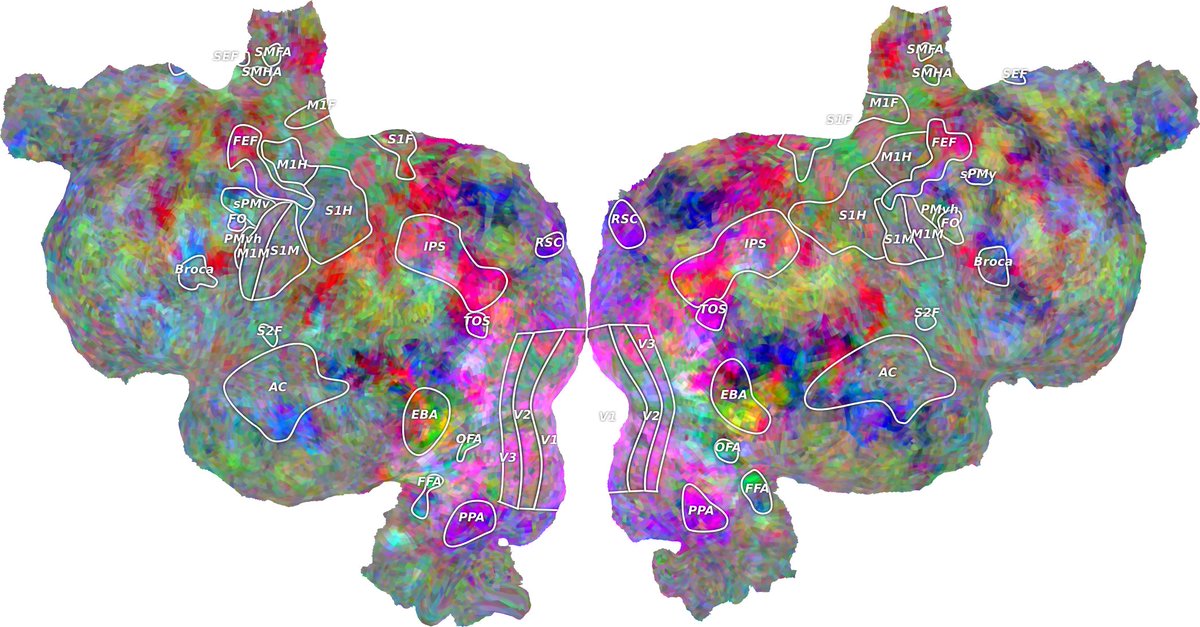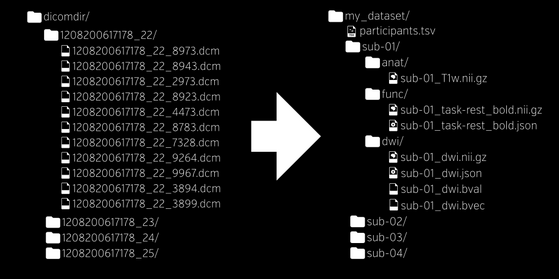Grad Student/Postdoc in neuroimaging. Stuck at home with no data to analyse? Do not despair, tons of online tools and data to play during the quarantine. A thread ->
N1: In this pandemic, some have family/financial obligations to worry about. Others are home alone. Many Master and PhD students still need to get a project done. To deal with the anxiety, some eat ice cream, some work out, some will analyse data. All are valid approaches
N2: Some people will find these tools are already part of their skillset. It is a privilege from a handful of labs to keep up with the latest trends. Personally I& #39;m still struggling to understand the changing landscape of NIMG tools, so I hope this helps others catch up faster
0- general info on neuroimaging? -> OHBM
1-Basic skills -> Bash, Python & Git
2-Core software -> FSL & Freesurfer
3-Learn the Theory behind -> GLM & Time Series
4-Get free data -> openneuro/neurovault/synth
5- apply new tools -> fMRIPREP DOCKER
6- Other cool tools
1-Basic skills -> Bash, Python & Git
2-Core software -> FSL & Freesurfer
3-Learn the Theory behind -> GLM & Time Series
4-Get free data -> openneuro/neurovault/synth
5- apply new tools -> fMRIPREP DOCKER
6- Other cool tools
0- A bit lost on what DTI, RSN, or MVPA stands for? Wanna start on these and don& #39;t know where, read the excellent tutorials by @OHBM
https://www.ohbmbrainmappingblog.com/tutorials.html ">https://www.ohbmbrainmappingblog.com/tutorials...
https://www.ohbmbrainmappingblog.com/tutorials.html ">https://www.ohbmbrainmappingblog.com/tutorials...
02-if you really want to get into one of the subjects, dive into the past meetings of @OHBM and take advantage of the expertise of thousands of brain scientists. This includes all the amazing educational courses !!! https://www.pathlms.com/ohbm ">https://www.pathlms.com/ohbm"...
1a- Learn bash, the shell language of unix. Bash scripting will allow you to manage/move/rename files and set up the main pipelines for FSL, Freesurfer and many other tools https://learnxinyminutes.com/docs/bash/ ">https://learnxinyminutes.com/docs/bash...
1? What if you have a PC with windows? Three alternatives
1 - Embrace linux and install a dual boot (Preferred option https://itsfoss.com/guide-install-linux-mint-16-dual-boot-windows/)">https://itsfoss.com/guide-ins...
2- install it a virtual machine
https://www.youtube.com/watch?v=vBSSGmZU7Bc">https://www.youtube.com/watch...
3- W10 now includes a Unix shell, it might work, but at your own risk
1 - Embrace linux and install a dual boot (Preferred option https://itsfoss.com/guide-install-linux-mint-16-dual-boot-windows/)">https://itsfoss.com/guide-ins...
2- install it a virtual machine
https://www.youtube.com/watch?v=vBSSGmZU7Bc">https://www.youtube.com/watch...
3- W10 now includes a Unix shell, it might work, but at your own risk
1b- Learn Python. I learned matlab first, and still use it most of the time, but fast & steadily, lots of great tools are being developed exclusively for python. + is Free & open source, and might help escape academia if needed.
1bb Lots of tutorials out there, but basic stuff can be found here
Scientific computing with tools and workflow
http://scipy-lectures.github.com/intro/intro.html
The">https://scipy-lectures.github.com/intro/int... python language
http://scipy-lectures.org/intro/language/python_language.html
creating">https://scipy-lectures.org/intro/lan... and manipulating numerical data with numpy
http://scipy-lectures.org/intro/numpy/index.html">https://scipy-lectures.org/intro/num...
Scientific computing with tools and workflow
http://scipy-lectures.github.com/intro/intro.html
The">https://scipy-lectures.github.com/intro/int... python language
http://scipy-lectures.org/intro/language/python_language.html
creating">https://scipy-lectures.org/intro/lan... and manipulating numerical data with numpy
http://scipy-lectures.org/intro/numpy/index.html">https://scipy-lectures.org/intro/num...
1c- Learn git. Git allows you to keep track of changes in your code, share it & collaborate with others. Importantly, most useful code for NIMG is stored in github, so better learn how to pull it to your PC
http://swcarpentry.github.io/git-novice/ ">https://swcarpentry.github.io/git-novic...
http://swcarpentry.github.io/git-novice/ ">https://swcarpentry.github.io/git-novic...
2- Learn the core tools for doing most NIMG analysis, there are several options out there. I’d recommend using fsl and @FreeSurferMRI, and get those bash skills to good use
2a- FSL stands for fMRI Software library, and is a general purpose suite of tools to do task fmri, RSN, DTI, VBM, ASL and much more.
FSL course is great http://fsl.fmrib.ox.ac.uk/fslcourse/ ">https://fsl.fmrib.ox.ac.uk/fslcourse...
FSL course is great http://fsl.fmrib.ox.ac.uk/fslcourse/ ">https://fsl.fmrib.ox.ac.uk/fslcourse...
2aa
- @FSLeyes is the more practical software to visualize your MRI volumes
-Fslmaths is the easiest way to make mathematical operations with volumes
-Working with gzipped files, the default in fsl, will save you tons of gigabytes
- @FSLeyes is the more practical software to visualize your MRI volumes
-Fslmaths is the easiest way to make mathematical operations with volumes
-Working with gzipped files, the default in fsl, will save you tons of gigabytes
2b - Learn @FreeSurferMRI . A suite of tools to analyse cortical surfaces. Ever wondered how people make those nice inflated brains with blobs, well is freesurfer. Surface plots are cooler, and more easy to visualize than volume plots
FS eats your MRI, chew them, and spit gray matter & white matter metrics, as well as automatic labels of different brain regions.
Tutorial: http://surfer.nmr.mgh.harvard.edu/fswiki/FsTutorial">https://surfer.nmr.mgh.harvard.edu/fswiki/Fs...
Tutorial: http://surfer.nmr.mgh.harvard.edu/fswiki/FsTutorial">https://surfer.nmr.mgh.harvard.edu/fswiki/Fs...
FS is basically an analogue for FSL or SPM but for surfaces instead of volumes (with many exceptions)
-Group analysis (GLM) & smoothing are more accurate if aligned in the surface
-Many atlases native space is surface, such as @bttyeo networks
-Group analysis (GLM) & smoothing are more accurate if aligned in the surface
-Many atlases native space is surface, such as @bttyeo networks
-Glasser parcellation, perhaps the most comprehensive parcellation of the cortex available, can be easily be imported to freesurfer
https://figshare.com/articles/HCP-MMP1_0_projected_on_fsaverage/3498446">https://figshare.com/articles/...
https://figshare.com/articles/HCP-MMP1_0_projected_on_fsaverage/3498446">https://figshare.com/articles/...
You already know FS & want to take your brain plotting skills to the next level? Try pysurfer https://pysurfer.github.io/ ">https://pysurfer.github.io/">... the most powerful tool for making the most beautiful plots. The example gallery is a great starting point to prove my point
Does pysurfer seems easy and want to take a real challenge, try plotting your data using flat
brain, using pycortex. It can generate high quality 2D flattened cortical visualizations.
https://gallantlab.github.io/pycortex/ ">https://gallantlab.github.io/pycortex/...
brain, using pycortex. It can generate high quality 2D flattened cortical visualizations.
https://gallantlab.github.io/pycortex/ ">https://gallantlab.github.io/pycortex/...
3a- Are you lost on all the theory behind fMRI, GLM, regressions, covariates & orthogonalization, Fear not, @mumbrainstats has created the most amazing & accessible tutorial on fMRI, FSL compatible
She made videos covering almost any aspect of the fMRI pipeline, as well as the math behind https://www.youtube.com/channel/UCZ7gF0zm35FwrFpDND6DWeA">https://www.youtube.com/channel/U...
3b- Do you want to really understand the neats & tricks behind resting state fMRI? Electrophysiology tools are the answer. Mike Cohen has developed some great resources including online lectures . Consider getting a copy of his book, analysing neural time series with Matlab.
Yes, is in Matlab & sadly some stuff behind a paywall (-), but the topics are so well explained that is a pity not to use it. Topics include fourier transform, filtering, correlation, coherence, granger causality and more. His videos on matrix algebra are also really good
https://www.youtube.com/channel/UCUR_LsXk7IYyueSnXcNextQ/videos">https://www.youtube.com/channel/U...
4a- The fun part. Get free data. @OpenNeuroOrg is a free and open platform for sharing MRI, MEG, EEG, iEEG, and ECoG data, with a 337 public dataset including task mri, DTI, lots of resting state, in clinical & healthy population, even 7T MRI data.
https://openneuro.org/ ">https://openneuro.org/">...
https://openneuro.org/ ">https://openneuro.org/">...
For the brain body interaction peeps, the Leipzig Mind Brain Body dataset is stored here as well
https://openneuro.org/datasets/ds000221/versions/00002
https://openneuro.org/datasets/... href="https://twitter.com/michagaebler">@michagaebler
https://openneuro.org/datasets/ds000221/versions/00002
4b. Openneuro data are stored in BIDS- Brain Imaging Data Software.
https://bids.neuroimaging.io/
https://bids.neuroimaging.io/">... href="https://twitter.com/BIDSstandard">@BIDSstandard
https://bids.neuroimaging.io/
Basically at some point the NIMG community realized that if different labs stored the data using different folders & naming conventions, sharing data and making reproducible research would be a task for the 22 century.
The great advantage of BIDs are BIDS apps, a series of pipelines that will take a BIDS dataset of inputs and spit processed/analyzed data as output https://bids-apps.neuroimaging.io/apps/ ">https://bids-apps.neuroimaging.io/apps/&quo...
4b, Besides raw data, you can also access unthresholded tmaps from published studies from @VaultNeuro
https://neurovault.org/
This">https://neurovault.org/">... is great for comparing your results with other people data
https://neurovault.org/
This">https://neurovault.org/">... is great for comparing your results with other people data
Another great resource is @neurosynth https://neurosynth.org/ ">https://neurosynth.org/">... a platform for large-scale, automated synthesis of functional magnetic resonance imaging (fMRI) data.
You can search for keywords (Working memory) & perform automatic metanalysis. You can also click a brain region and see where is connected by @talyarkoni
5- Feeling lost on how to implement your preprocessing pipeline? Don’t know if first apply slice timing correction or estimation of head motion? Do not despair, a group of scientists have developed a bullet proof yet flexible pipeline that will perform the essential preprocessin
.. steps for you. You literally have to to write a couple of lines of code and fMRIprep will do the rest
https://fmriprep.readthedocs.io/en/stable/ ">https://fmriprep.readthedocs.io/en/stable... by @russpoldrack
https://fmriprep.readthedocs.io/en/stable/ ">https://fmriprep.readthedocs.io/en/stable... by @russpoldrack
fMRI prep will preprocess your anatomical images (including FS & state of the art ANTS), perform the essential fmri preprocessing steps, and estimate several nuisance variables to apply to your data
5b- fMRIprep runs in docker
https://www.docker.com/
Docker">https://www.docker.com/">... are containers that come with all the essential software to perform a task. Is like a mini OS with the bare essential software to make a toolbox run.
https://www.docker.com/
Docker">https://www.docker.com/">... are containers that come with all the essential software to perform a task. Is like a mini OS with the bare essential software to make a toolbox run.
Instead of spend time dealing with python versions and ending up having to format your OS (true story), embrace this new tool as its getting increasingly more popular way to use the state of the arts tools
6- There are plenty of other online resources that can be used to perform complicated analysis. Very experienced researchers have spended a lot of time in developing robust pipelines to perform highly specific analysis.
Reinventing these tools is a waste of time, which should be rather spended understanding how these tools work and applying them to your data. Below some tools which I found useful or I think might interest other people
6a- Do you want to make your own brain parcellation of your favorite region using resting state or DTI data, try connectivity based parcellation tools
https://cbptools.readthedocs.io/en/latest/overview/workflow.html
https://cbptools.readthedocs.io/en/latest... href="https://twitter.com/INM7_ISN">@INM7_ISN
https://cbptools.readthedocs.io/en/latest/overview/workflow.html
6b. Are you excited about all the new developments of gradients of cortical connectivity & function? Wanna try to get your own gradients, try brainspace: analysis of macroscale gradients in neuroimaging and connectomics datasets
https://www.nature.com/articles/s42003-020-0794-7
https://www.nature.com/articles/... href="https://twitter.com/reindervosdwael">@reindervosdwael
https://www.nature.com/articles/s42003-020-0794-7
6c Want to dig deeper into the mysteries of the HRF, ever wanted to deconvolve the HRF and access the neural firing behind it? Try rsHRF, Resting state HRF estimation from BOLD-fMRI signal
https://github.com/BIDS-Apps/rsHRF
https://github.com/BIDS-Apps... href="https://twitter.com/dan_marinazzo">@dan_marinazzo
https://github.com/BIDS-Apps/rsHRF
6d. Wanna try cutting edge fMRI denoising techniques, explore lagged correlations and get rid of physiological noise? Try Rapidtide, a suite of python programs used to perform rapid time delay analysis on functional imaging data
https://rapidtide.readthedocs.io/en/latest/
https://rapidtide.readthedocs.io/en/latest... href="https://twitter.com/blaisefrederick">@blaisefrederick
https://rapidtide.readthedocs.io/en/latest/
6e. Want to make the most beautiful (VOLUME) fmri plots? Try playing with the MRIcroGL scripting tutorials
https://www.mccauslandcenter.sc.edu/mricrogl/scripting">https://www.mccauslandcenter.sc.edu/mricrogl/...
https://www.mccauslandcenter.sc.edu/mricrogl/scripting">https://www.mccauslandcenter.sc.edu/mricrogl/...
I’m probably missing quite a lot of resources, so feel free to add them & comment of this
@threadreaderapp unroll

 Read on Twitter
Read on Twitter